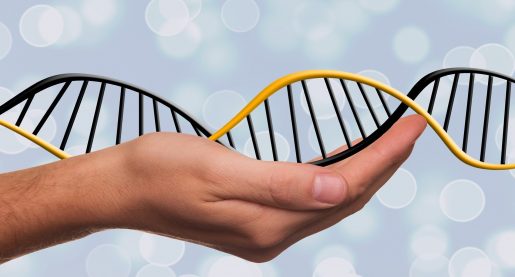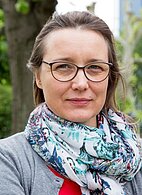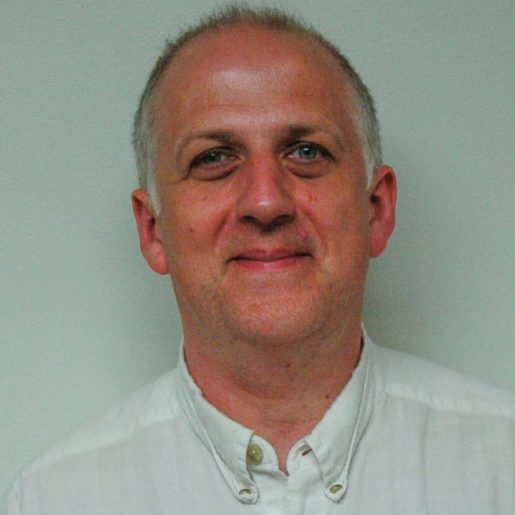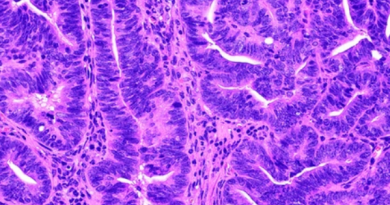First step to untangle DNA: capture gyrase like a lasso ropes cattle

Picture in your mind a traditional “landline” telephone with a coiled cord connecting the handset to the phone. The coiled telephone cord and the DNA double helix that stores the genetic material in every cell in the body have one thing in common; they both supercoil, or coil about themselves, and tangle in ways that can be difficult to undo. In the case of DNA, if this overwinding is not dealt with, essential processes such as copying DNA and cell division grind to a halt. Fortunately, cells have an ingenious solution to carefully regulate DNA supercoiling.
In this study published in the journal Science, researchers at Baylor College of Medicine, Université de Strasbourg, Université Paris Cité, and collaborating institutions reveal how DNA gyrase resolves DNA entanglements. The findings not only provide novel insights into this fundamental biological mechanism but also have potential practical applications. Gyrases are biomedical targets for the treatment of bacterial infections and the similar human versions of the enzymes are targets for many anti-cancer drugs. Better understanding of how gyrases work at the molecular level can potentially improve clinical treatments.
Some DNA supercoiling is essential to make DNA accessible to allow the cell to read and make copies of the genetic information, but either too little or too much supercoiling is detrimental.
For example, the act of copying and reading DNA overwinds it ahead of the enzymes that read and copy the genetic code, interrupting the process. It’s long been known that DNA gyrase plays a role in untangling the overwinding, but the details were not clear.
DNA minicircles and advanced imaging techniques reveal first step to untangle DNA

“We typically picture DNA as the straight double helix structure, but inside cells, DNA exists in supercoiled loops. Understanding the molecular interactions between the supercoils and the enzymes that participate in DNA functions has been technically challenging, so we typically use linear DNA molecules instead of coiled DNA to study the interactions,” said study author Dr. Lynn Zechiedrich, Kyle and Josephine Morrow Chair in Molecular Virology and Microbiology and professor of the Verna and Marrs McLean Department of Biochemistry and Molecular Pharmacology at Baylor College of Medicine. “One goal of our laboratory has been to study these interactions using a DNA structure that more closely mimics the actual supercoiled and looped DNA form present in living cells.”
After years of work, the Zechiedrich lab has created small loops of supercoiled DNA. In essence, they took the familiar straight linear DNA double helix and twisted it in either direction once, twice, three times or more and connected the ends together to form a loop.
Their previous study looking at the 3-D structures of the resulting supercoiled minicircles revealed that these loops form a variety of shapes that they hypothesized enzymes such as gyrase would recognize.
In the current study, their hypothesis was proven correct. The team of researchers combined their expertise to study the interactions of DNA gyrase with DNA minicircles using recent technology advances in electron cryomicroscopy, an imaging technique that produces high-resolution 3-D views of large molecules, and other technologies.

“My lab has long been interested in understanding how molecular nanomachines operate in the cell. We have been studying DNA gyrases, very large enzymes that regulate DNA supercoiling,” said co-corresponding author Dr. Valérie Lamour, associate professor at the Institut de Génétique et de Biologie Moléculaire et Cellulaire, Université de Strasbourg. “Among other functions, supercoiling is the cell’s way of confining about 2 meters (6.6 feet) of linear DNA into the microscopic nucleus of the cell.”
As the DNA supercoils inside the nucleus, it twists and folds in different forms. Imagine twisting that telephone cord mentioned at the beginning, several times on itself. It will overwind and form a loop by crossing over DNA chains, tightening the structure.

“We found, just as we had hypothesized, that gyrase is attracted to the supercoiled minicircle and places itself in the inside of this supercoiled loop,” said co-author, Dr. Jonathan Fogg, senior staff scientist of molecular virology and microbiology, and biochemistry and molecular pharmacology in the Zechiedrich lab.
“This is the first step of the mechanism that prompts the enzyme for resolving DNA entanglements,” Lamour said.
“DNA gyrase, now surrounded by a tightly supercoiled loop, will cut one DNA helix in the loop, pass the other DNA helix through the cut in the other, and reseal the break, which relaxes the overwinding and eases the tangles, regulating DNA supercoiling to control DNA activity,” Zechiedrich said.
Imagine watching the rodeo. Like roping cattle with a lasso, supercoiled looped DNA captures gyrase in the first step. Gyrase then cuts one double-helix of the DNA lasso and passes the other helix through the break to get free.”
Co-corresponding author, Dr. Marc Nadal, professor at the Ecole Normale in Paris confirmed the observation of the path of the DNA wrapped in the loop around gyrase using magnetic tweezers, a biophysical technique that allows to measure the deformation and fluctuations in the length of a single molecule of DNA. Observing a single molecule provides information that is often obscured when looking at thousands of molecules in traditional so-called “ensemble” experiments in a test tube.
Interestingly, the “DNA strand inversion model” for gyrase activity was proposed in 1979 by Drs. Patrick O. Brown and the late Nicholas R. Cozzarelli, also in a Science paper, well before researchers had access to supercoiled minicircles or the 3-D molecular structure of the enzyme. “It’s especially meaningful to me that 45 years later, we finally provide experimental evidence supporting their hypothesis because Nick was my postdoctoral mentor,” Zechiedrich said.
“This study is beautiful and a tour de force. It’s exciting to see a mechanism that I first “saw” by using a rubber tube as the DNA and my hands as the enzyme (DNA gyrase), now visualized in atomic detail in this paper,” said Brown, professor of biochemistry at Stanford University.
This work opens a myriad of perspectives to study the mechanism of this conserved class of enzymes, which are of great clinical value,” Lamour said.
“This work supports new ideas on how DNA activities are regulated. We propose that DNA is not a passive biomolecule acted upon by enzymes, but an active one that uses supercoiling, looping and 3-D shapes to direct accessibility of enzymes such as gyrase to specific DNA sequences in a variety of situations, which will surely impact cellular responses to antibiotics or other treatments,” Fogg said.
Contributors to this work also include Marlène Vayssières (lead author), Nils Marechal, Long Yun, Brian Lopez Duran and Naveen Kumar Murugasamy. The authors are affiliated with one or more of the following institutions: Baylor College of Medicine, Université de Strasbourg, Institut de Génétique et de Biologie Moléculaire et Cellulaire, INSERM, Université Paris and Hôpitaux Universitaires de Strasbourg.
For a list of financial support for this work, see the publication.
Follow From the Labs on X @BCMFromtheLabs and Instagram!



